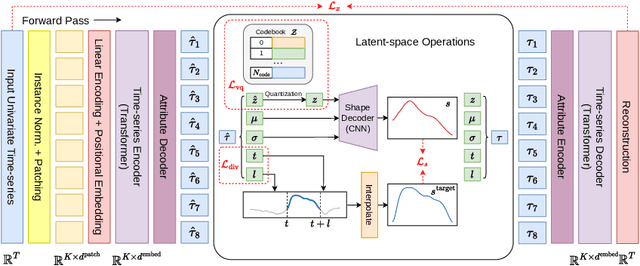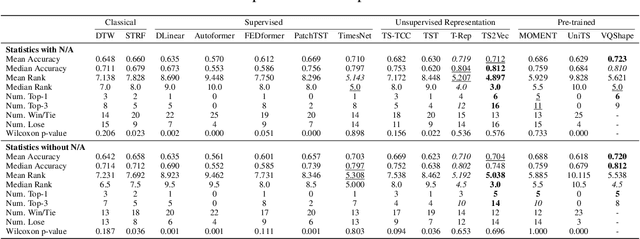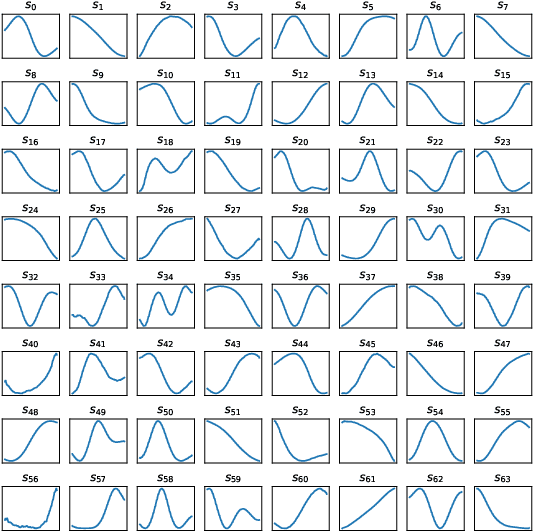Tengfei Ma
College of Computer Science and Electronic Engineering, Hunan University
The Budget AI Researcher and the Power of RAG Chains
Jun 14, 2025Abstract:Navigating the vast and rapidly growing body of scientific literature is a formidable challenge for aspiring researchers. Current approaches to supporting research idea generation often rely on generic large language models (LLMs). While LLMs are effective at aiding comprehension and summarization, they often fall short in guiding users toward practical research ideas due to their limitations. In this study, we present a novel structural framework for research ideation. Our framework, The Budget AI Researcher, uses retrieval-augmented generation (RAG) chains, vector databases, and topic-guided pairing to recombine concepts from hundreds of machine learning papers. The system ingests papers from nine major AI conferences, which collectively span the vast subfields of machine learning, and organizes them into a hierarchical topic tree. It uses the tree to identify distant topic pairs, generate novel research abstracts, and refine them through iterative self-evaluation against relevant literature and peer reviews, generating and refining abstracts that are both grounded in real-world research and demonstrably interesting. Experiments using LLM-based metrics indicate that our method significantly improves the concreteness of generated research ideas relative to standard prompting approaches. Human evaluations further demonstrate a substantial enhancement in the perceived interestingness of the outputs. By bridging the gap between academic data and creative generation, the Budget AI Researcher offers a practical, free tool for accelerating scientific discovery and lowering the barrier for aspiring researchers. Beyond research ideation, this approach inspires solutions to the broader challenge of generating personalized, context-aware outputs grounded in evolving real-world knowledge.
FCOS: A Two-Stage Recoverable Model Pruning Framework for Automatic Modulation Recognition
May 27, 2025Abstract:With the rapid development of wireless communications and the growing complexity of digital modulation schemes, traditional manual modulation recognition methods struggle to extract reliable signal features and meet real-time requirements in modern scenarios. Recently, deep learning based Automatic Modulation Recognition (AMR) approaches have greatly improved classification accuracy. However, their large model sizes and high computational demands hinder deployment on resource-constrained devices. Model pruning provides a general approach to reduce model complexity, but existing weight, channel, and layer pruning techniques each present a trade-off between compression rate, hardware acceleration, and accuracy preservation. To this end, in this paper, we introduce FCOS, a novel Fine-to-COarse two-Stage pruning framework that combines channel-level pruning with layer-level collapse diagnosis to achieve extreme compression, high performance and efficient inference. In the first stage of FCOS, hierarchical clustering and parameter fusion are applied to channel weights to achieve channel-level pruning. Then a Layer Collapse Diagnosis (LaCD) module uses linear probing to identify layer collapse and removes the collapsed layers due to high channel compression ratio. Experiments on multiple AMR benchmarks demonstrate that FCOS outperforms existing channel and layer pruning methods. Specifically, FCOS achieves 95.51% FLOPs reduction and 95.31% parameter reduction while still maintaining performance close to the original ResNet56, with only a 0.46% drop in accuracy on Sig2019-12. Code is available at https://github.com/yaolu-zjut/FCOS.
AdaptMol: Adaptive Fusion from Sequence String to Topological Structure for Few-shot Drug Discovery
May 17, 2025Abstract:Accurate molecular property prediction (MPP) is a critical step in modern drug development. However, the scarcity of experimental validation data poses a significant challenge to AI-driven research paradigms. Under few-shot learning scenarios, the quality of molecular representations directly dictates the theoretical upper limit of model performance. We present AdaptMol, a prototypical network integrating Adaptive multimodal fusion for Molecular representation. This framework employs a dual-level attention mechanism to dynamically integrate global and local molecular features derived from two modalities: SMILES sequences and molecular graphs. (1) At the local level, structural features such as atomic interactions and substructures are extracted from molecular graphs, emphasizing fine-grained topological information; (2) At the global level, the SMILES sequence provides a holistic representation of the molecule. To validate the necessity of multimodal adaptive fusion, we propose an interpretable approach based on identifying molecular active substructures to demonstrate that multimodal adaptive fusion can efficiently represent molecules. Extensive experiments on three commonly used benchmarks under 5-shot and 10-shot settings demonstrate that AdaptMol achieves state-of-the-art performance in most cases. The rationale-extracted method guides the fusion of two modalities and highlights the importance of both modalities.
Blend the Separated: Mixture of Synergistic Experts for Data-Scarcity Drug-Target Interaction Prediction
Mar 20, 2025Abstract:Drug-target interaction prediction (DTI) is essential in various applications including drug discovery and clinical application. There are two perspectives of input data widely used in DTI prediction: Intrinsic data represents how drugs or targets are constructed, and extrinsic data represents how drugs or targets are related to other biological entities. However, any of the two perspectives of input data can be scarce for some drugs or targets, especially for those unpopular or newly discovered. Furthermore, ground-truth labels for specific interaction types can also be scarce. Therefore, we propose the first method to tackle DTI prediction under input data and/or label scarcity. To make our model functional when only one perspective of input data is available, we design two separate experts to process intrinsic and extrinsic data respectively and fuse them adaptively according to different samples. Furthermore, to make the two perspectives complement each other and remedy label scarcity, two experts synergize with each other in a mutually supervised way to exploit the enormous unlabeled data. Extensive experiments on 3 real-world datasets under different extents of input data scarcity and/or label scarcity demonstrate our model outperforms states of the art significantly and steadily, with a maximum improvement of 53.53%. We also test our model without any data scarcity and it still outperforms current methods.
MM-Retinal V2: Transfer an Elite Knowledge Spark into Fundus Vision-Language Pretraining
Jan 27, 2025



Abstract:Vision-language pretraining (VLP) has been investigated to generalize across diverse downstream tasks for fundus image analysis. Although recent methods showcase promising achievements, they significantly rely on large-scale private image-text data but pay less attention to the pretraining manner, which limits their further advancements. In this work, we introduce MM-Retinal V2, a high-quality image-text paired dataset comprising CFP, FFA, and OCT image modalities. Then, we propose a novel fundus vision-language pretraining model, namely KeepFIT V2, which is pretrained by integrating knowledge from the elite data spark into categorical public datasets. Specifically, a preliminary textual pretraining is adopted to equip the text encoder with primarily ophthalmic textual knowledge. Moreover, a hybrid image-text knowledge injection module is designed for knowledge transfer, which is essentially based on a combination of global semantic concepts from contrastive learning and local appearance details from generative learning. Extensive experiments across zero-shot, few-shot, and linear probing settings highlight the generalization and transferability of KeepFIT V2, delivering performance competitive to state-of-the-art fundus VLP models trained on large-scale private image-text datasets. Our dataset and model are publicly available via https://github.com/lxirich/MM-Retinal.
S$^2$DN: Learning to Denoise Unconvincing Knowledge for Inductive Knowledge Graph Completion
Dec 20, 2024Abstract:Inductive Knowledge Graph Completion (KGC) aims to infer missing facts between newly emerged entities within knowledge graphs (KGs), posing a significant challenge. While recent studies have shown promising results in inferring such entities through knowledge subgraph reasoning, they suffer from (i) the semantic inconsistencies of similar relations, and (ii) noisy interactions inherent in KGs due to the presence of unconvincing knowledge for emerging entities. To address these challenges, we propose a Semantic Structure-aware Denoising Network (S$^2$DN) for inductive KGC. Our goal is to learn adaptable general semantics and reliable structures to distill consistent semantic knowledge while preserving reliable interactions within KGs. Specifically, we introduce a semantic smoothing module over the enclosing subgraphs to retain the universal semantic knowledge of relations. We incorporate a structure refining module to filter out unreliable interactions and offer additional knowledge, retaining robust structure surrounding target links. Extensive experiments conducted on three benchmark KGs demonstrate that S$^2$DN surpasses the performance of state-of-the-art models. These results demonstrate the effectiveness of S$^2$DN in preserving semantic consistency and enhancing the robustness of filtering out unreliable interactions in contaminated KGs.
Abstracted Shapes as Tokens -- A Generalizable and Interpretable Model for Time-series Classification
Nov 01, 2024



Abstract:In time-series analysis, many recent works seek to provide a unified view and representation for time-series across multiple domains, leading to the development of foundation models for time-series data. Despite diverse modeling techniques, existing models are black boxes and fail to provide insights and explanations about their representations. In this paper, we present VQShape, a pre-trained, generalizable, and interpretable model for time-series representation learning and classification. By introducing a novel representation for time-series data, we forge a connection between the latent space of VQShape and shape-level features. Using vector quantization, we show that time-series from different domains can be described using a unified set of low-dimensional codes, where each code can be represented as an abstracted shape in the time domain. On classification tasks, we show that the representations of VQShape can be utilized to build interpretable classifiers, achieving comparable performance to specialist models. Additionally, in zero-shot learning, VQShape and its codebook can generalize to previously unseen datasets and domains that are not included in the pre-training process. The code and pre-trained weights are available at https://github.com/YunshiWen/VQShape.
Y-Mol: A Multiscale Biomedical Knowledge-Guided Large Language Model for Drug Development
Oct 15, 2024Abstract:Large Language Models (LLMs) have recently demonstrated remarkable performance in general tasks across various fields. However, their effectiveness within specific domains such as drug development remains challenges. To solve these challenges, we introduce \textbf{Y-Mol}, forming a well-established LLM paradigm for the flow of drug development. Y-Mol is a multiscale biomedical knowledge-guided LLM designed to accomplish tasks across lead compound discovery, pre-clinic, and clinic prediction. By integrating millions of multiscale biomedical knowledge and using LLaMA2 as the base LLM, Y-Mol augments the reasoning capability in the biomedical domain by learning from a corpus of publications, knowledge graphs, and expert-designed synthetic data. The capability is further enriched with three types of drug-oriented instructions: description-based prompts from processed publications, semantic-based prompts for extracting associations from knowledge graphs, and template-based prompts for understanding expert knowledge from biomedical tools. Besides, Y-Mol offers a set of LLM paradigms that can autonomously execute the downstream tasks across the entire process of drug development, including virtual screening, drug design, pharmacological properties prediction, and drug-related interaction prediction. Our extensive evaluations of various biomedical sources demonstrate that Y-Mol significantly outperforms general-purpose LLMs in discovering lead compounds, predicting molecular properties, and identifying drug interaction events.
TrojVLM: Backdoor Attack Against Vision Language Models
Sep 28, 2024



Abstract:The emergence of Vision Language Models (VLMs) is a significant advancement in integrating computer vision with Large Language Models (LLMs) to produce detailed text descriptions based on visual inputs, yet it introduces new security vulnerabilities. Unlike prior work that centered on single modalities or classification tasks, this study introduces TrojVLM, the first exploration of backdoor attacks aimed at VLMs engaged in complex image-to-text generation. Specifically, TrojVLM inserts predetermined target text into output text when encountering poisoned images. Moreover, a novel semantic preserving loss is proposed to ensure the semantic integrity of the original image content. Our evaluation on image captioning and visual question answering (VQA) tasks confirms the effectiveness of TrojVLM in maintaining original semantic content while triggering specific target text outputs. This study not only uncovers a critical security risk in VLMs and image-to-text generation but also sets a foundation for future research on securing multimodal models against such sophisticated threats.
Iterative or Innovative? A Problem-Oriented Perspective for Code Optimization
Jun 17, 2024



Abstract:Large language models (LLMs) have demonstrated strong capabilities in solving a wide range of programming tasks. However, LLMs have rarely been explored for code optimization. In this paper, we explore code optimization with a focus on performance enhancement, specifically aiming to optimize code for minimal execution time. The recently proposed first PIE dataset for performance optimization constructs program optimization pairs based on iterative submissions from the same programmer for the same problem. However, this approach restricts LLMs to local performance improvements, neglecting global algorithmic innovation. Therefore, we adopt a completely different perspective by reconstructing the optimization pairs into a problem-oriented approach. This allows for the integration of various ingenious ideas from different programmers tackling the same problem. Experimental results demonstrate that adapting LLMs to problem-oriented optimization pairs significantly enhances their optimization capabilities. Meanwhile, we identified performance bottlenecks within the problem-oriented perspective. By employing model merge, we further overcame bottlenecks and ultimately elevated the program optimization ratio ($51.76\%\rightarrow76.65\%$) and speedup ($2.65\times\rightarrow5.09\times$) to new levels.
 Add to Chrome
Add to Chrome Add to Firefox
Add to Firefox Add to Edge
Add to Edge